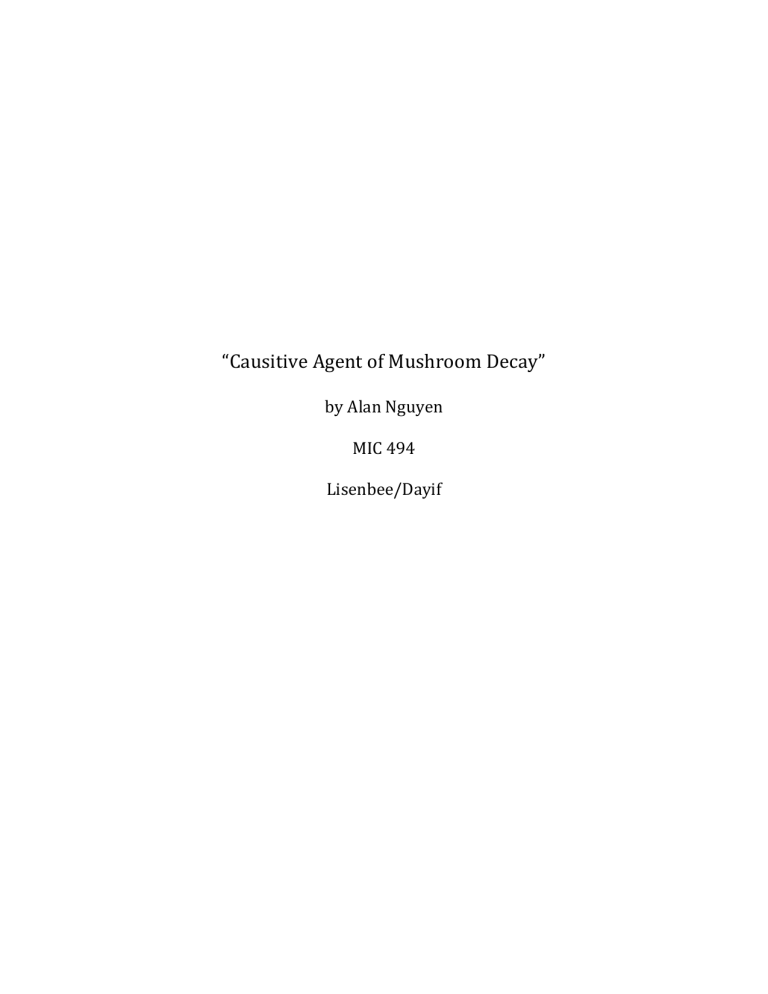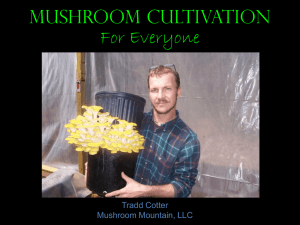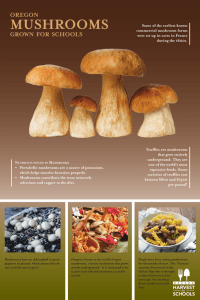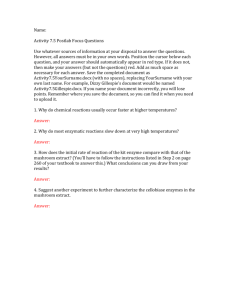Causitive Agent of Mushroom Decay

“Causitive Agent of Mushroom Decay” by Alan Nguyen
MIC 494
Lisenbee/Dayif
Abstract
The white-button mushroom is susceptible to disease like any other plant or animal. This experiment aims to identify the specific causative agent by utilizing Koch’s postulates and a series of biochemical tests.
Introduction
Across the United States, the mushroom industry produces 793 million pounds of mushrooms that yielded roughly $925 million during the 2009-10 season (NASS, 2009). A favorite of the mushroom industry is the white-button mushroom a.k.a. Agaricus bisporus, which totaled in volume of 778 million pounds in sales. A. bisporus had an estimated value of $886 million (NASS 2009).
However, many of the mushrooms cultivated do not reach the store shelves due to bacterial infections that cause brown surface lesions known as blotch disease. If the blotch disease is caused by bacterial infection, then how do we sort out the pathogen from the mushroom’s normal flora?
Materials and Methods
In my experiment I wanted to make a special agar that would be selective to fungal bacteria growth called “shroom” agar. To do this, first weigh out 73 grams of A. bisporus. Next, chop up the mushrooms to expose more surface area. Then measure out 1 liter of distilled water keeping the proportions 72g/1liter. Then boil the mushrooms in the measured distilled water at 300°F for 15 minutes. Weigh out 15g of agar powder and add it to an Erlenmeyer flask. Place a strainer on top of a funnel in the flask and pour mushroom water extract into the flask making sure to completely dissolve the solute using a magnetic stir bar. Finally, autoclave the solution at 15psi at 121°C for 15 minutes.
The second part of my experiment involves using aseptic technique to acquire isolated colonies of bacteria. I took my initial streak from the cap of a healthy white-button mushroom and streaked it out to a TSA plate. I let that incubate for 48 hours and then did my second round of streaks. I picked 4 colonies and streaked them out on new TSA plates calling them each A.N. 1-4 respectively.
I proceeded to inoculate a healthy mushroom cap with the typed out bacteria I cultivated. I streaked in 4 different quadrants of the cap and added a water quadrant as my control. This round of inoculations was left into the open air that caused some problems. I put my second round of inoculations by put them into a Ziploc bag with an aluminum ring acting as a buffer to prevent the sides of the bag from coming into contact with the mushroom.
Results
After 16 different mushroom inoculations, I was unable to find a causative agent of brown blotch disease. Instead I picked the most “interesting” bacterium that I collected which had an orange hue on the TSA plate. This bacterium was a Gram-negative rod and non-motile.
After a phenol red test, the bacterium did not ferment mannitol, lactose, dextrose, or sucrose. The bacterium does not contain the enzyme urease and gelatinase. The MR-VP and
Simmons Citrate test also turned up negative. However, the bacterium is capable of reducing nitrate to nitrite via a reductase enzyme.
As for the inoculated mushrooms, my first round that was left into the open air quickly dried and shriveled up after 24 hours. My second attempt yielded far greater results in the Ziploc bags however no noticeable bacterial decay was evident. The mushroom retained moisture however appeared to decay normally.
Biochemical Test
PR: Mannitol
PR: Lactose
PR: Dextrose
PR: Sucrose
Urea
Gelatin
MR-VP
Nitrate
Result
NEG
NEG
NEG
NEG
NEG
NEG
NEG
POS
Interpretation
Does not ferment mannitol sugar
Does not ferment lactose sugar
Does not ferment dextrose sugar
Does not ferment sucrose sugar
Does not produce urease enzyme
Does not contain enzyme gelatinase
Does not perform mixed acid fermentation
Possesses nitrate reductase enzyme. Reduces nitrate nitrite
Citrate NEG Does not use citrate as a carbon source
Conclusion
After my first round of mushroom inoculations where they dried up, I hypothesized that they were drying up because the mushrooms were unable to retain moisture. I altered my experiment and put them in a Ziploc bag and found that it worked quite well.
The biochemical tests were, undoubtedly, a key part to identifying my bacterium along with the Gram-stain. After weeks of testing and inoculating mushrooms, I found my specific bacterium to be Leminorella richardii. The key identifying biochemical tests was the MR-VP and the Simmons Citrate; had those two yielded a positive result, then the bacterium would have been Leminorella grimontii
Fig. 1 Phenol red test showing the unknown
On the left along with positive controls of
E. coli and S. aureus in the middle and right.
Fig. 3 shows a negative Urea test for the unknown on the left along with a negative control sample of E. coli on the right.
Fig. 5 shows a positive MR-VP result on the left of the unknown and two positive controls of E. coli and S. aureus in the middle and right.
Fig. 2 A negative motility test of unknown on the right along with a positive control on the left side.
Fig. 4 shows a positive reaction of a nitrate test on the left along with negative controls of E. coli and S. aureus in the middle and right.
Fig. 6 shows the results of a Simmons Citrate test. The tube on the left is a negative control of E. coli. The tube has only a slight tinge of greenish pigment at the top. The middle tube is the result of the unkown and the tube on the right is a positive control of S. typhimurium.
*Note the bright royal blue as compared to the much darker blues on the left.






